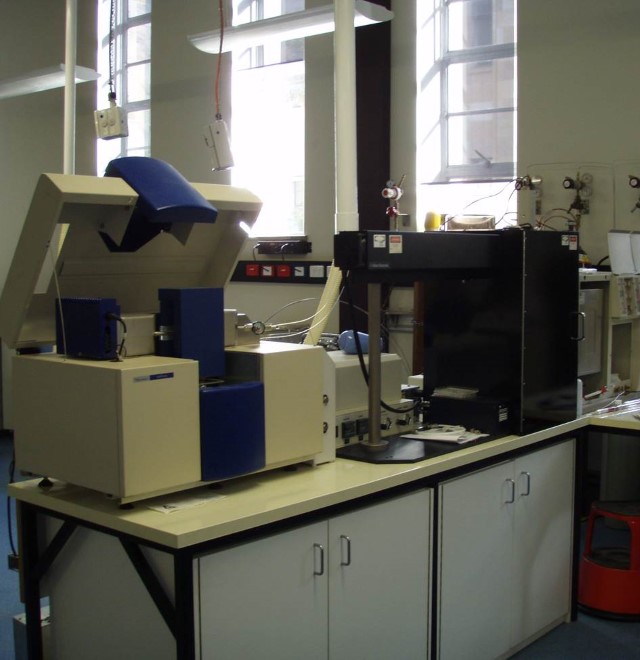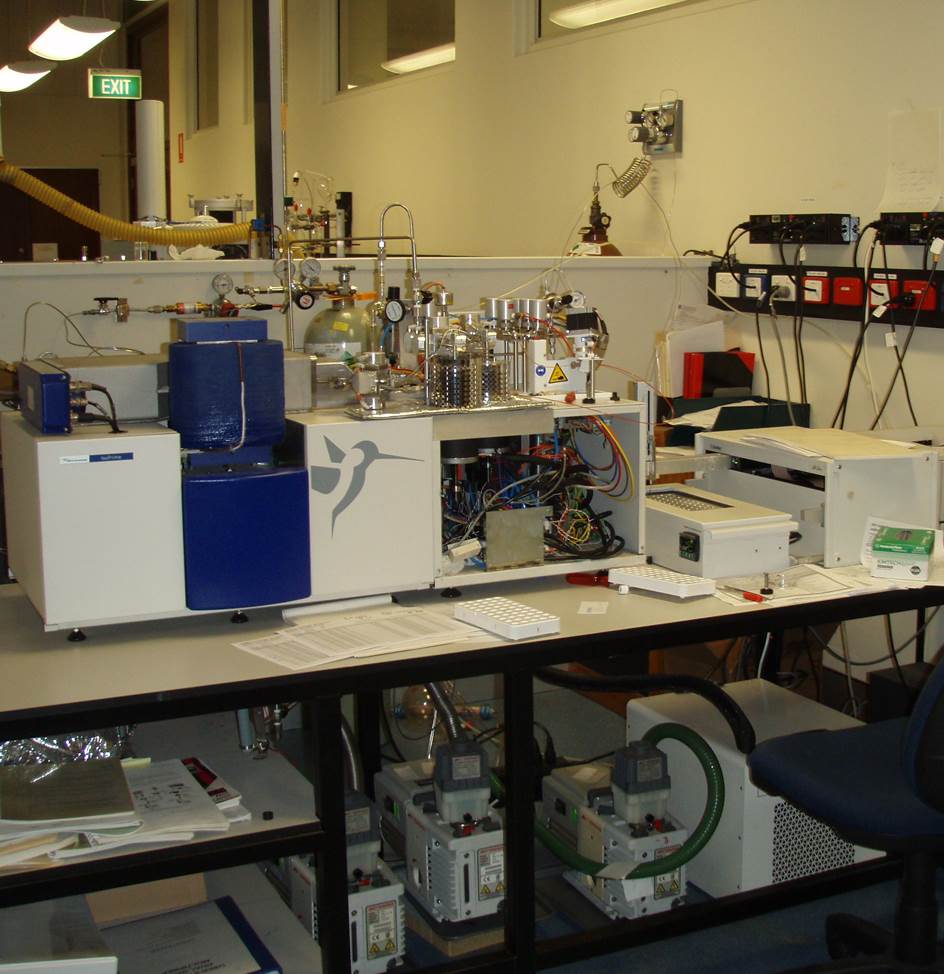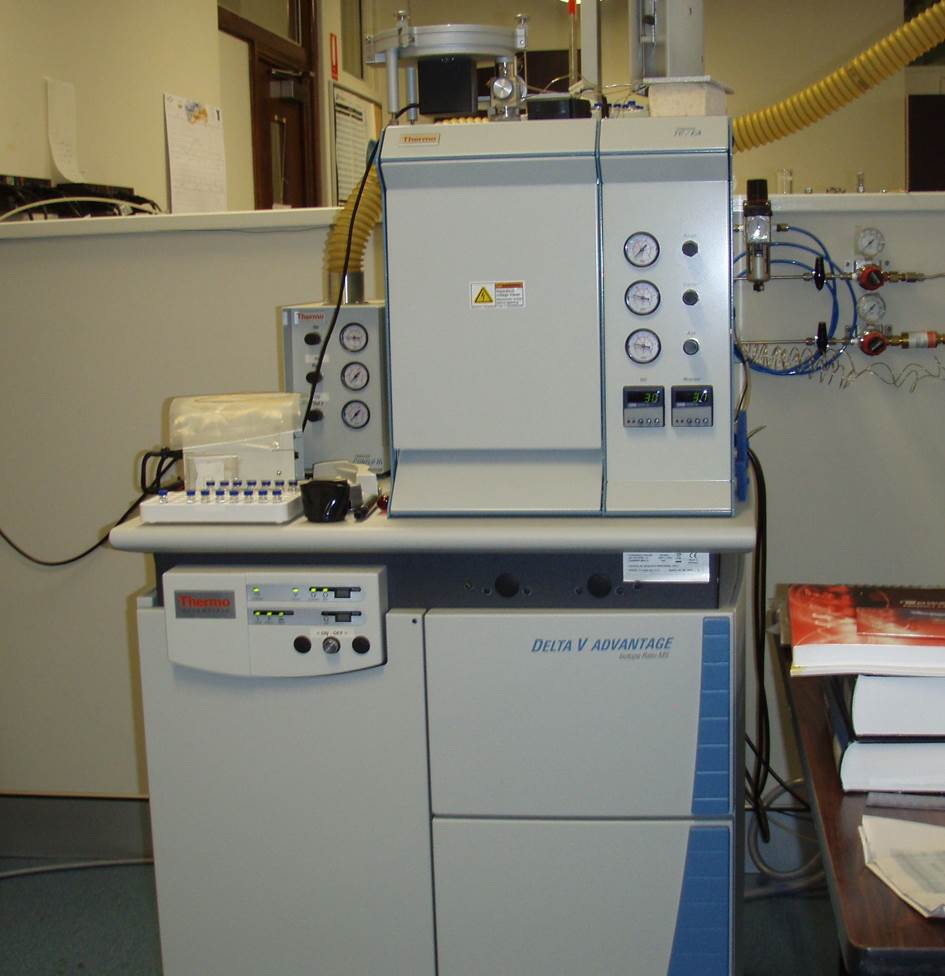Stable Isotope Geochemistry Laboratory

Our Stable Isotope Geochemistry Laboratory is one of the most comprehensive laboratories in the Southern Hemisphere.
It hosts a full suite of equipment covering the complete cycle from preparation to analysis of the stable isotopes in geological and environmental samples.
Established in 1960, the laboratory has strong connections with both industry and government combined with an exemplary record of academic research.
It is located in the Richards Building (Building 5) on the Great Court, in what was UQ’s original Geology Museum.
Availability
Researchers and commercial clients can use the Stable Isotope Geochemistry Laboratory for isotope ratio analyses.
You can undertake commercial analyses for forensics, environmental, medical and mining applications, and research analyses to investigate Earth’s geological processes.
To discuss your analytical requirements and sample preparation, email Kim Baublys, Operational Manager, at k.baublys@uq.edu.au.
Prices
See our analyses prices.
Range of equipment
Our mix of traditional offline vacuum preparation systems, modern dual inlet and continuous flow instrumentation and various online sample preparation devices allows us to be adaptable. We can offer a full suite of traditional stable isotopes (H, O, C, N, S) on a wide variety of geological and biological samples, including:
- Natural and enriched waters and biological samples: oxygen and hydrogen isotopes by equilibration using the Dual Inlet MS with multiprep bench
- Carbonates and forams: carbon and oxygen isotopes, both online with DI-multiprep and offline vacuum systems thus allowing analysis of all species of carbonates (siderite, dolomite, calcite)
- Sulfides, sulfates and hydrocarbons: δ34S and δ33S (MIF) analysis using the EA-CF-IRMS
- Mineral separates, quartz chips (fluid inclusions): hydrogen isotopes on mineral and clay separates using either the zero blank autosampler coupled with a TC-EA-IRMS or our offline vacuum extraction system with RF generator
- Gases: CH4, CO2, H.
All instruments and analyses are calibrated directly against IAEA International Standards (SMOW, SLAP, GISP for waters; NBS18, NBS19, LVSEC for carbonates and DIC; IAEAS1, S2, S3 for sulfurs; IGS, OzTekH1, H2, H3 for gas analyses) as per Coplen 1996, and Paul 2007.
Instrumentation
 Isoprime Continuous Flow Mass Spectrometer with Elemental Analyser and Laser (EA-CF-IRMS)
Isoprime Continuous Flow Mass Spectrometer with Elemental Analyser and Laser (EA-CF-IRMS)
- For organic carbon and sulfur isotope analysis. Included is the simultaneous measurement of sulfur 33 and sulfur 34 isotopes required for research on mass independent fractionation.
- Has a small CO2 laser attached. The laser is plumbed through a small GC, which also has a manual injection port.
- Functions as an online preparation system, which produces N2, CO2, SO2, and H2O by combustion of solid or liquid samples. Sample sizes typically range from 50g-200g for an analysis.
- Can also measure the elemental composition of a sample by using the thermal conductivity detector (TCD). After combustion in the EA the product gases are carried via capillary in a stream of He to the mass spectrometer for stable isotope analysis.
- For analysis of organic C & N (kerogen, hydrocarbon fractions), organic S isotopes (kerogen, hydrocarbon fractions), sulfide and sulfate S isotopes.
 Isoprime Dual Inlet Mass Spectrometer with Multiprep (DI-IRMS)
Isoprime Dual Inlet Mass Spectrometer with Multiprep (DI-IRMS)
- For analysis of carbonates (C, O), and waters (D, O).
- Set up with a single sample inlet that enables you to analyse gases produced from the offline systems such as the mineral hydrogen line and the carbonate line.
 Thermo Delta V Advantage Continuous Flow mass spectrometer with thermal combustion elemental analyser, gas bench and liquids and solid zero blank autosamplers (CF-TC/EA IRMS)
Thermo Delta V Advantage Continuous Flow mass spectrometer with thermal combustion elemental analyser, gas bench and liquids and solid zero blank autosamplers (CF-TC/EA IRMS)
- For quick simultaneous analysis of D and O on waters and D/H analysis on solid samples such as clay species.
Combustion isotope ratio mass spectrometer Isoprime-(GC-c-IRMS)
- For identifying mixtures of various mine gases and performing stable isotope analysis on these different species such as methane, carbon dioxide, hydrogen and the lower ranked hydrocarbons (13C and 2H).
Carbonate extraction line
- For analysing siderite, dolomite and impure carbonate (<5% carbonate) samples.
Mineral hydrogen and fluid inclusions extraction line
- Use a radio frequency generator to crack the fluid inclusions in quartz samples and to fuse clay minerals for D/H analysis.
Experimental vacuum extraction line
- For a variety of sample preparations, including offline sulfur preparations and organic carbon experiments.
